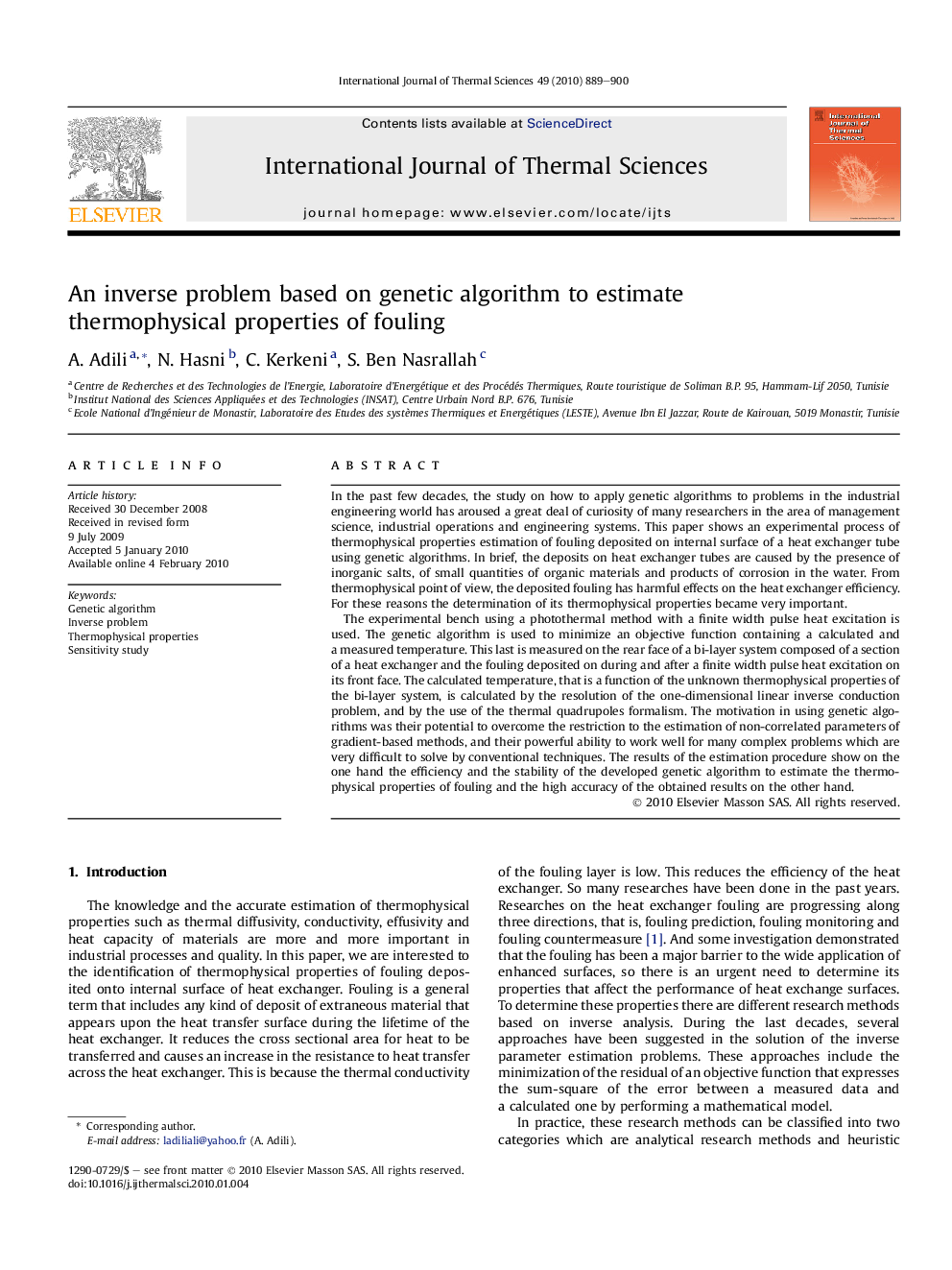| Article ID | Journal | Published Year | Pages | File Type |
|---|---|---|---|---|
| 669113 | International Journal of Thermal Sciences | 2010 | 12 Pages |
Abstract
The experimental bench using a photothermal method with a finite width pulse heat excitation is used. The genetic algorithm is used to minimize an objective function containing a calculated and a measured temperature. This last is measured on the rear face of a bi-layer system composed of a section of a heat exchanger and the fouling deposited on during and after a finite width pulse heat excitation on its front face. The calculated temperature, that is a function of the unknown thermophysical properties of the bi-layer system, is calculated by the resolution of the one-dimensional linear inverse conduction problem, and by the use of the thermal quadrupoles formalism. The motivation in using genetic algorithms was their potential to overcome the restriction to the estimation of non-correlated parameters of gradient-based methods, and their powerful ability to work well for many complex problems which are very difficult to solve by conventional techniques. The results of the estimation procedure show on the one hand the efficiency and the stability of the developed genetic algorithm to estimate the thermophysical properties of fouling and the high accuracy of the obtained results on the other hand.
Related Topics
Physical Sciences and Engineering
Chemical Engineering
Fluid Flow and Transfer Processes
Authors
A. Adili, N. Hasni, C. Kerkeni, S. Ben Nasrallah,
